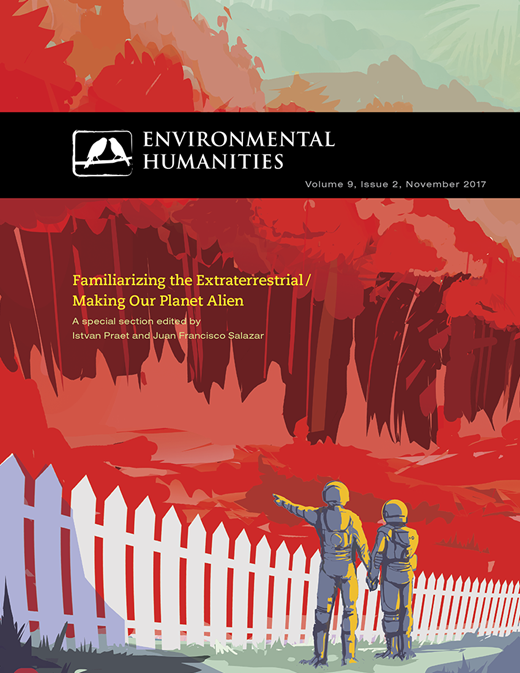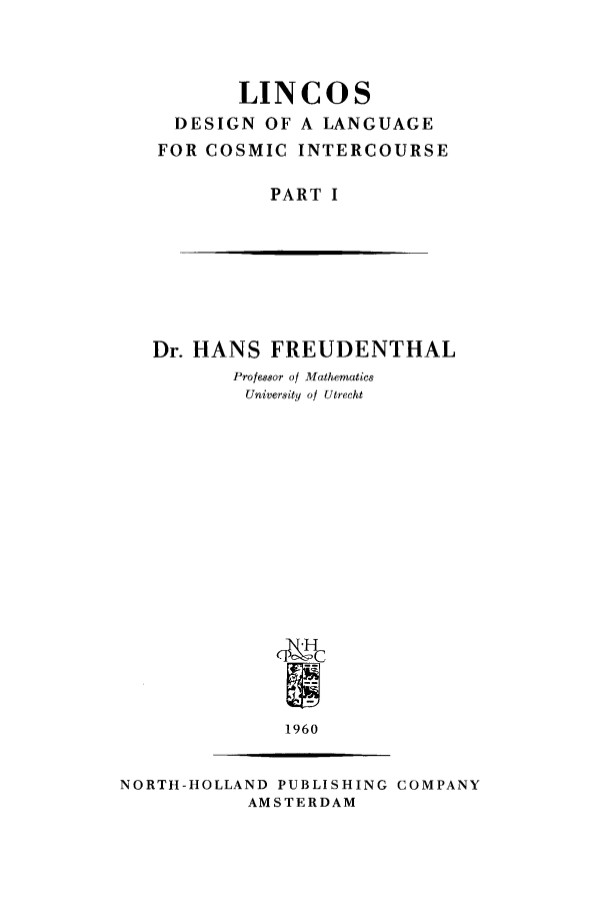Environmental Humanities, 9(2): Familiarizing the Extraterrestrial / Making Our Planet Alien (2017)
Filed under journal | Tags: · alien, astronomy, cosmos, earth, extraterrestrial, imagination, life, science, space

“A growing number of researchers in the social sciences and the environmental humanities have begun to focus on the wider universe and how it is apprehended by modern cosmology. Today the extraterrestrial has become part of the remit of anthropologists, philosophers, historians, geographers, scholars in science and technology studies, and artistic researchers, among others. And there is an emerging consensus that astronomers and other natural scientists—contrary to a common prejudice—are never simply depicting or describing the cosmos “just as it is.” Their research is always characterized by a specific aesthetic style and by a particular “cosmic imagination,” as some have called it. Scientific knowledge of the universe is based on skilled judgments rather than on direct, unmediated perception. It is science, but it is also an art. This special section focuses on two at first sight contradictory aspects of this cosmic imagination. On the one hand, there is a distinctive move toward viewing the extraterrestrial in familiar terms and comprehending it by means of conceptual frameworks that we, earthlings, are accustomed to. On the other hand, there is a tendency to understand our own planet in unfamiliar terms, especially in astrobiology, where so-called analog sites and “extreme environments” provide clues about alien planets.”
Special section edited by Istvan Praet and Juan Francisco Salazar
Publisher Duke University Press, November 2017
Creative Commons BY-NC-ND 3.0 License
ISSN 2201‐1919
pages 300-455
Hans Freudenthal: Lincos: Design of a Language for Cosmic Intercourse, Part I (1960)
Filed under book | Tags: · extraterrestrial, language, logic, mathematics

This book introduces an artificial language designed to be understandable by any possible intelligent extraterrestrial life form, for use in interstellar radio transmissions. The Dutch mathematician Hans Freudenthal considered that such a language should be easily understood by beings not acquainted with any Earthling syntax or language. Lincos was designed to be capable of encapsulating “the whole bulk of our knowledge.”
Publisher North-Holland, Amsterdam, 1960
Studies in Logic and the Foundations of Mathematics series
224 pages
via keriokleptes
Reviews: S.W.P. Steen (British J Phil of Science, 1962), E.E. Dawson (Mind, 1964), Louis Narens (J Symbolic Logic, 1973).
Survey: Vincenzo Latronico (ACME, 2007).
Commentary: Vincenzo Latronico (Bulletins of The Serving Library, 2017).
PDF (10 MB)
See also CosmicOS inspired by Lincos.
Valerie Olson, Lisa Messeri: Beyond the Anthropocene: Un-Earthing an Epoch (2015)
Filed under paper | Tags: · anthropocene, earth, earth system, ecology, environment, extraterrestrial, geography, space
“As “the Anthropocene” emerges as a geological term and environmental analytic, this paper examines its emerging rhetorical topology. We show that Anthropocene narratives evince a macroscale division between an “inner” and “outer” environment. Th is division situates an Anthropocenic environment that matters in the surface zone between Earth’s subsurface and the extraterrestrial “outer spaces” that we address here. We review literature in the sciences and social sciences to show how contemporary environmental thinking has been informed by understandings of Earth’s broader planet-scaled environmental relations. Yet, today’s Anthropocene conversation draws analytic attention inward and downward. Bringing in literature from scholars who examine the role of the extraterrestrial and outer environmental perspectives in terrestrial worlds, we suggest that Anthropocenic theorizations can productively incorporate inclusive ways of thinking about environments that matter. We argue for keeping “Anthropocene” connected to its spatial absences and physical others, including those that are non-anthropos in the extreme.” (Abstract)
Published in Environment and Society, 6, 2015, pp 28-47
20 pages

